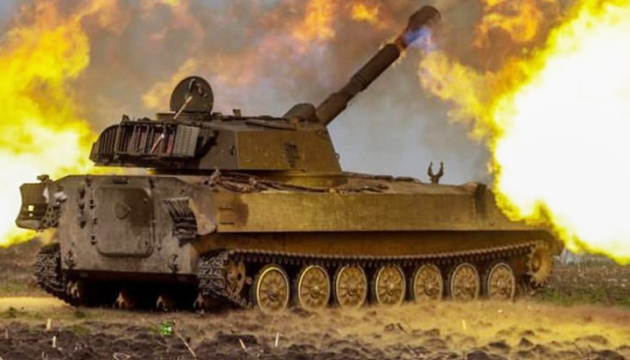
Ukraine forces fending off Russian offensive in Luhansk region as enemy targets Sievierodonetsk
The critical mission facing Ukraine’s defense forces in Luhansk region at the moment is holding back an unprecedentedly large invading force. There is hope that Ukraine’s counteroffensive may be launched in the area.
Luhansk Regional Military Administration head Serhii Haidai addressed the issue during the UArazom telethon, an Ukrinform correspondent reports.
"I really hope that Luhansk region is now fulfilling a huge mission as it is holding back an unrealistically large influx of Russian troops so that our forces have time to get the long-sought weapons we’ve been all waiting for, namely long-range artillery that can destroy heavy equipment and enemy reserves,” said the administration chief.
He added that the Ukrainian military would be out of range for Russian artillery units given the technical characteristics of foreign self-propelled guns and howitzers.
"Yes, it’s very difficult for us right now. But I would like all this to be not in vain. In order for our troops to be rearmed just now, to regroup, we would like to see a counteroffensive in Luhansk region,” Haidai stressed.
He stated that currently, enemy attacks continue, with all the cities of Luhansk region being constantly shelled by invaders.
"They (the invaders - ed.) sent in all their forces to storm Sievierodonetsk and to achieve a breakthrough - cutting the Lysychansk - Bakhmut highway. That’s in order for us not to be able to evacuate people and deliver humanitarian goods, to make it impossible to bring any supplies, any ammunition to our troops," the Luhansk Regional Military Administration head stressed.
Luhansk region is constantly under fire from the Russian army, with multiple households, infrastructure facilities, educational institutions, and hospitals destroyed across the region. According to the head of the Luhansk Regional Military Administration, until recently there were more than 40,000 civilians in the region who had refused to evacuate.
